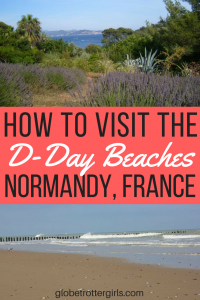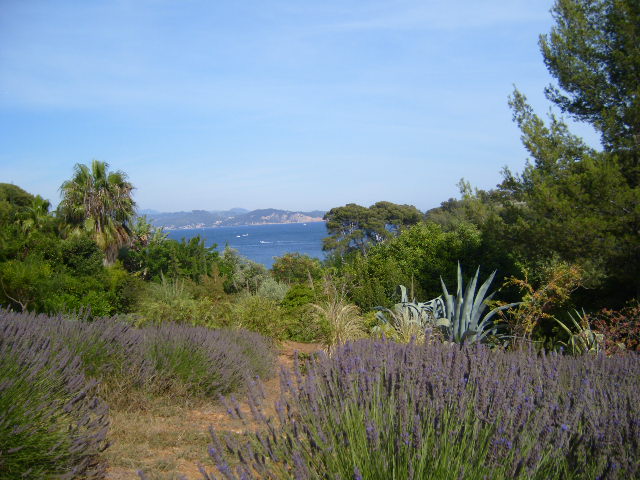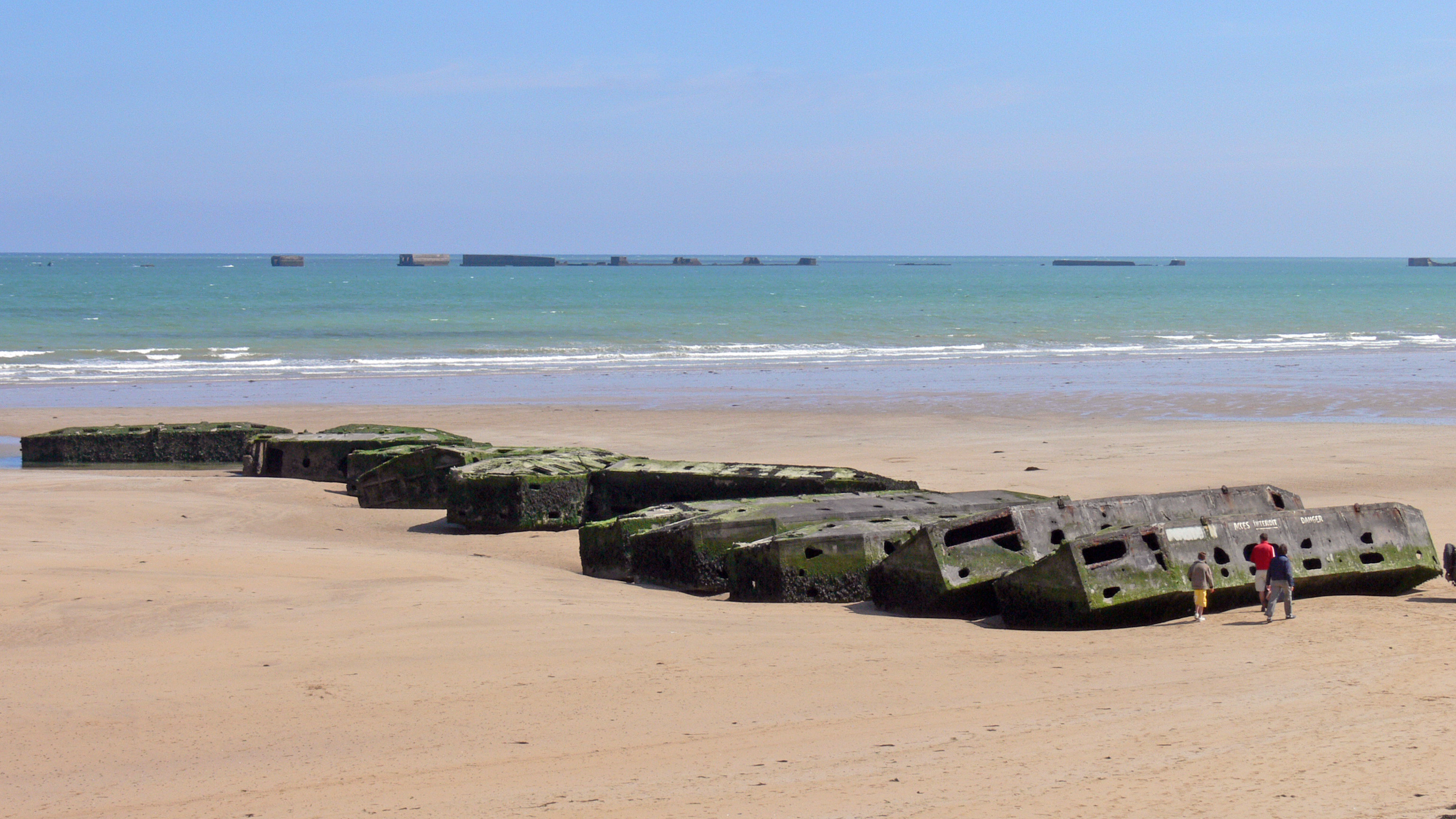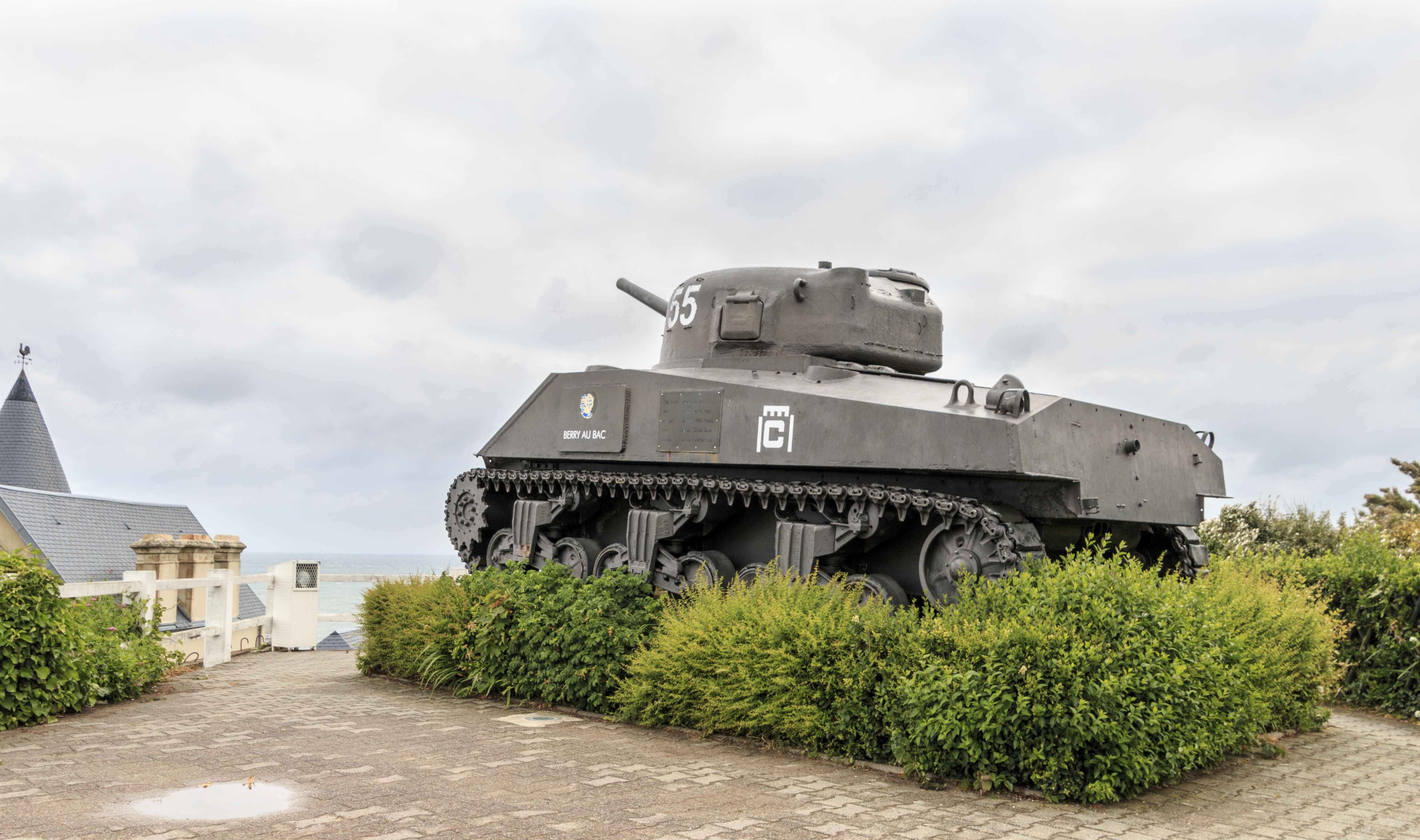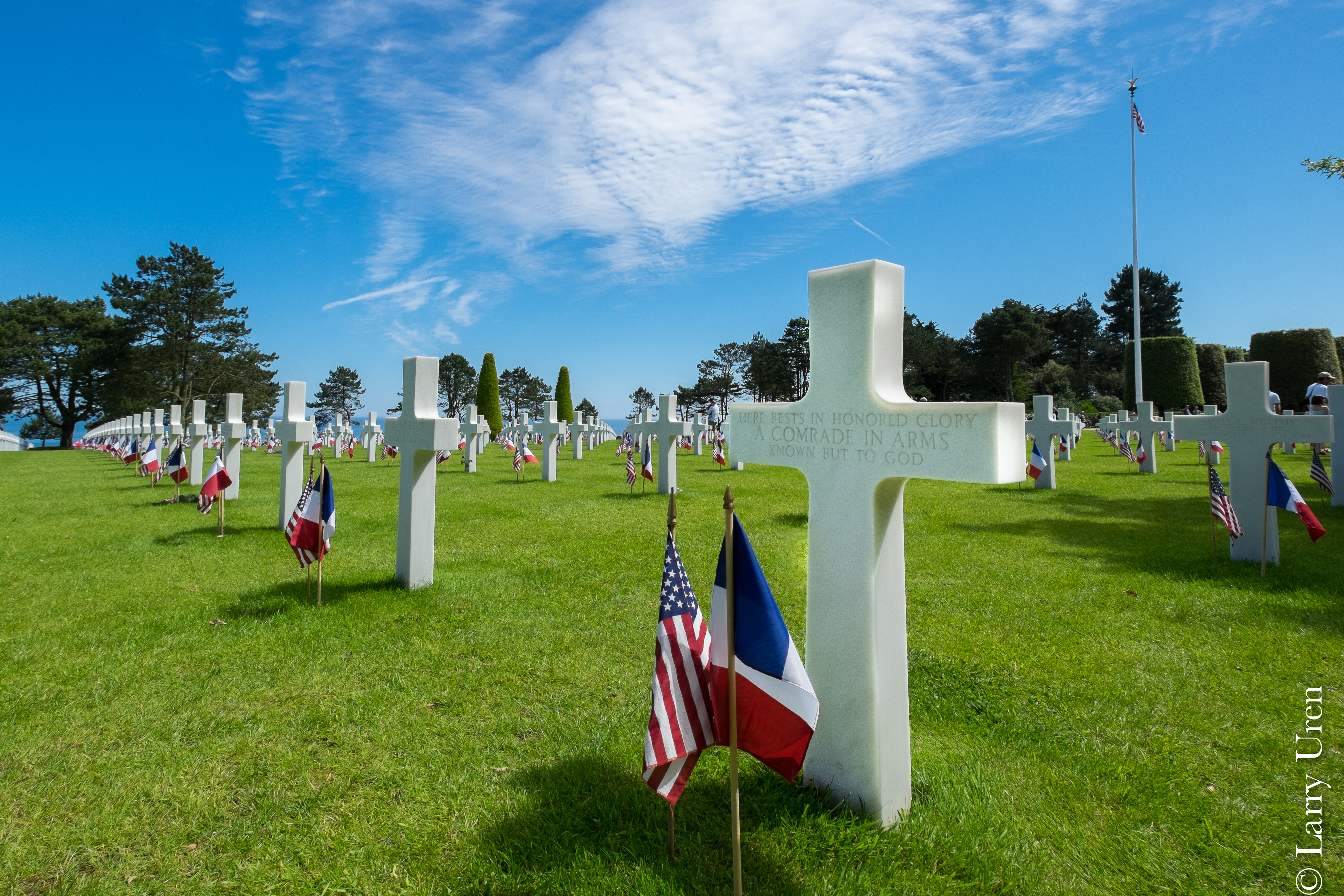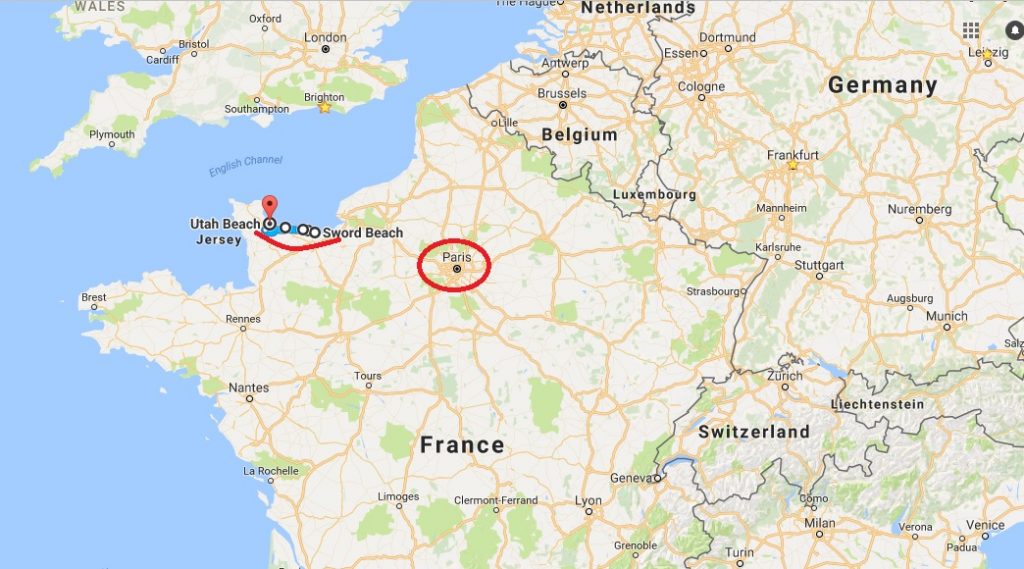Last Updated on January 22, 2024
The D-Day beaches are one of the most popular day trips from Paris, especially for Americans, Brits and Canadians whose parents or grandparents fought the Germans in World War II.
The D-Day Beaches Of Normandy
The historic significance of these beaches hasn’t lessened, even nearly 80 years after Operation Overload, which was the invasion of Western Europe by the Allied Nations on 6 June 1944. On that day, over 135,000 troops landed in Normandy, unifying against the Germans. The Allied Nations (Britain, Canada and the U.S.) were each allocated a number of beaches to invade, which were codenamed:
- Utah Beach (U.S.)
- Omaha Beach (U.S.)
- Juno Beach (Canada)
- Gold Beach (Britain)
- Sword Beach (Britain)
 When visiting the Normandy coast these days, it’s almost inconceivable that one of the most important and magnificent operations against the Germans happened here, an accomplishment that would later lead to the successful victory against Hitler’s Nazi regime.
When visiting the Normandy coast these days, it’s almost inconceivable that one of the most important and magnificent operations against the Germans happened here, an accomplishment that would later lead to the successful victory against Hitler’s Nazi regime.
Today, you’ll pass by rolling hills, quaint little seaside towns, surrounded by lush green farmland and cattle fields. The beaches themselves are beautiful and tranquil, and it is hard to imagine that thousands of soldiers lost their lives here.
However, you cannot escape the memories of D-Day when visiting this part of France – war memorials and monuments mark where the Allies landed, there are remains of bunkers and gun emplacements left by the Germans, and most importantly, there is the Normandy American Cemetery, where 9,387 American soldiers are buried.
If you are visiting to honor family members who fought or lost their lives there, you may want to try to visit on 6 June, when a number of D-Day anniversary memorials are held.
The easiest way to visit the area is with a tour, which usually includes all the beaches plus the Memorial Church in Caen (see below for details). Here is an overview of the main sights you shouldn’t miss when visiting the D-Day beaches, including all five beaches, which still carry the names given by the Allies in preparation of the operation.
The main sights you shouldn’t miss when visiting the D-Day beaches
The Caen Memorial
The Caen Memorial is the best place to start your tour of the D-Day beaches. The museum was recently renovated, and in addition to detailed information on D-Day and World War II, it has plenty of material on The Battle Of Normandy, The Cold War and the search for peace.
Utah Beach
The museum at this beach, the Utah Beach Landing Museum, is housed in the remains of a German bunker. Many say that this is the best D-Day museum in the area. In the nearby village of Sainte-Mère-Eglise is the Airborne Museum, which details the aerial operations.
Pointe du Hoc
Pointe Du Hoc is the highest point between Utah Beach and Omaha Beach, with a 100 feet (30 meter) cliff overlooking the English Channel. The German army had fortified this area with gun pits, bunkers, artillery and concrete casemates. Pointe du Hoc was captured by 225 U.S. rangers on D-Day after scaling the cliffs, and has become a symbol of courage of the American troops. It is one of the most significant memorials along the D-Day coast.
Omaha Beach
Omaha Beach was the stretch of beach with the most intense battles. Memorials and statues line the beach.
This is probably where you will be spending the most time of all beaches. The American Cemetery is located right above the beach, and there are two museums: the Omaha Beach Memorial Museum, which showcases personal items of soldiers, weapons and uniforms, and the Omaha D-Day Museum which details the landing on Omaha Beach.
The Gun Battery in Longues-sur-Mer between Omaha Beach and Gold Beach has a number of bunkers which were Hitler’s most important points of defense.
Gold Beach
The Gold Beach invasion was led by the British, and the most important museum here is the America Gold Beach Museum and exhibits details of the landing here as well as the three-engine Fokker America’s first airmail flight from the United States to France.
Juno Beach
Juno Beach, where the invasion was under Canada’s lead, has the Juno Beach Centre, which outlines the significant role Canada played in the D-Day invasion. Nearby Bény-sur-Mer is home to the Canadian cemetery.
Sword Beach
Sword Beach is the easternmost of the five D-Day beaches. The operation here happened under British leadership, and there is a museum, the Merville Gun Battery, which details the British Airborne Operations.
The nearby Ranville War cemetery is home to 2,235 graves, most of which belong to the 6th Airborne Division.
The American Cemetery
The American Cemetery is one of the largest American war cemeteries and was the first one on European soil established during World War II. With 9,387 lives lost on D-Day and the consequent ensuing operations, it makes visitors realize the magnitude and true scale of this operation and the lives lost during it.
How to visit the D Day beaches from Paris
D-Day Beaches with a tour from Paris
Paris City Vision offers a guided tour of the D-Day beaches from Paris. The trip includes, in addition to the beaches, the Caen Memorial Church, the memorial service, and a delicious lunch. You’ll leave Paris at 7am and will return around 9pm. The advantage of taking a tour is not only that it’ll bring you to all places of interest, but it also includes a knowledgeable guide who will provide background information and historical details.
Visit the D-Day Beaches independently by train
You can also visit the beaches via public transportation – take the train from Paris to Caen and then hop on the local bus that connects the beaches, but be aware that buses aren’t running very often and trying to fit in all beaches, the Memorial and the American cemetery in one day would be quite a challenge.
Tip: If you book your train tickets in advance through the Omio app or website, they’ll be cheaper than buying them on your travel day at the train station. Omio offers discount train tickets for all of Europe – it helps me to travel around Europe on the cheap.
The trains to Caen leave from Paris’ St Lazare station and the journey takes around 2 hours. Expect to pay around $28 each way if you book your tickets in advance (they’re more expensive if you just show up at the train station and buy them on the day of your excursion to the D-Day Beaches).
The bus from Caen to Sword Beach is only a few dollars and takes about 40 minutes, but since it doesn’t run very often, a taxi would make more sense (20 minutes, €30 – 40).
To be honest, it’s barely doable to visit all of the beaches by train and bus in one day, which is why an organized tour to the D-Day beaches makes a lot more sense.
Visit the D-Day beaches by car
If you want to rent a car and drive from Paris, the trip takes around 2 hours and 45 minutes. Having a car gives you more flexibility when you’re at the coast, making visiting all of the beaches easier than taking trains and buses. It really helps to have a guide though – this is a trip for which an organized tour makes sense, even for people who are usually independent travelers.
Photo credit: All photos used via Flickr’s Creative Commons Licensing. (1) Arromanches Mulberry by Archangel12; (2) Arromanches 14 by Barry Skeates; (3) Normandy American Cemtery by Larry Uren
PIN IT!
